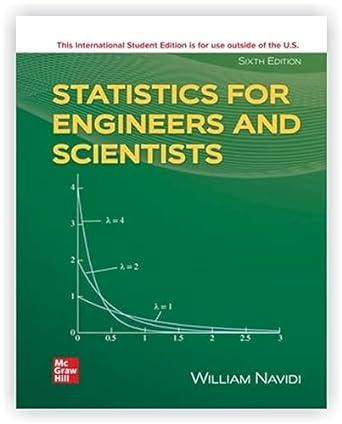A sample of size (n=100) is used to test (H_{0}: mu leq 20) versus (H_{1}: mu>20). The
Question:
A sample of size \(n=100\) is used to test \(H_{0}: \mu \leq 20\) versus \(H_{1}: \mu>20\). The value of \(\mu\) will not have practical significance unless \(\mu>25\). The population standard deviation is \(\sigma=10\). The value of \(\bar{X}\) is 21 .
a. Assume the sample size is \(n=100\). Compute the \(P\)-value. Show that you do not reject \(H_{0}\).
b. Assume the sample size is \(n=1000\). Compute the \(P\)-value. Show that you reject \(H_{0}\).
c. Do you think the difference is likely to be of practical significance? Explain.
d. Explain why a larger sample can be more likely to produce a statistically significant result that is not of practical significance.
Fantastic news! We've Found the answer you've been seeking!
Step by Step Answer:
Related Book For 

Question Posted:





